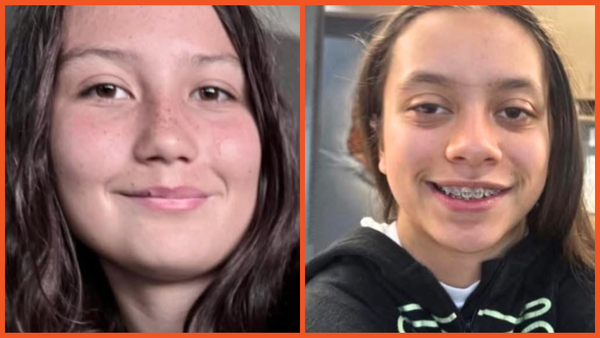
Hezbollah has vowed to continue resisting Israel and is monitoring the Israeli army’s withdrawal from south Lebanon “with [our] hands on the trigger”, the militia said in its first comments since a ceasefire came into effect on Wednesday.
A tense calm has descended on southern Lebanon – despite Israeli warplanes firing on what the military claimed was a rocket storage facility – but in the Gaza Strip Israel appears to have stepped up its campaign against the Palestinian group Hamas. At least 21 people were killed in airstrikes in the past 24 hours, hospital officials said, and Israeli ground forces are pushing deeper into the north and south of the enclave.
The Israeli military said its forces were continuing to “strike terror targets as part of the operational activity in the Gaza Strip”.
Hezbollah did not directly mention the truce but said its fighters “remain fully equipped to deal with the aspirations and assaults of the Israeli enemy”. It also remained committed to the Palestinian cause, the statement from its operations centre late on Wednesday said.
A 60-day staged withdrawal, in which Israel will pull out of Lebanon and Hezbollah will move its fighters and heavy weaponry out of a 16-mile-deep (25km) boundary buffer zone, went into effect at 4am local time on Wednesday.
The truce is designed to help broker a permanent end to 14 months of fighting, and violations will be monitored by a US-led supervisory mechanism, but the situation on the ground remains tense.
The Israeli military said on Thursday that the air force struck a facility used by Hezbollah to store mid-range rockets, the first such attack since the ceasefire started. Initial reports suggested the airstrike hit a location north of the Litani River, which is not included in the ceasefire agreement.
Israeli tank fire hit six areasalong the UN-demarcated blue line separating the two countries on Thursday morning, wounding two people, Lebanese security sources and state media said.
Israel’s military said in a statement: “Several suspects were identified arriving with vehicles to a number of areas in southern Lebanon, breaching the conditions of the ceasefire.” It said troops “opened fire toward them” and the army would “actively enforce violations of the ceasefire agreement”.
Thousands of displaced people in Lebanon have already packed up their belongings and attempted to return to their abandoned homes in the south amid contradictory statements from officials. The speaker of Lebanon’s parliament, Nabih Berri, the top interlocutor for Lebanon in negotiating the deal, said residents could return home, while Israel has warned them not to.
In another incident on Wednesday, Israeli forces opened fire on a number of cars that attempted to enter what it said was a restricted area.
“The Israeli enemy is attacking those returning to the border villages,” the Hezbollah politician Hassan Fadlallah told reporters on Thursday. “There are violations today by Israel, even in this form.”
The fighting has displaced about 1.2 million people in Lebanon and about 60,000 in Israel. Israelis are not yet allowed to return to homes near the border.
Earlier this week, the Lebanese health ministry, which does not differentiate between civilian and militant deaths, said Israeli fire had killed 3,823 people and injured 15,859 others since October 2023. Hezbollah strikes have killed 45 Israeli civilians and 73 soldiers, according to Israeli figures.
Hezbollah, which started firing rockets, drones and missiles at its neighbour in solidarity with Hamas a day after the Palestinian group attacked on Israel on 7 October 2023, traded cross-border fire with Israel for a year before Israel stepped up its air campaign in late September and sent in ground troops.
Crucially, during truce talks, Hezbollah dropped its demand that a ceasefire was contingent on an end to the fighting in Gaza.
The Israeli military declared a curfew for southern Lebanon from 5pm on Wednesday until 7am on Thursday, and again on Thursday night. It has prohibited displaced Lebanese people from returning to their homes while its forces remain in several areas.
Its spokesperson Avichay Adraee said: “We do not want to harm you – but our forces will not hesitate to engage with any forbidden movements in this zone.”
The US-brokered ceasefire, the most significant development in the effort to calm regional tensions that have rocked the Middle East since 7 October 2023, is not directly linked to the fighting in Gaza.
Talks aimed at stemming the bloodshed in the Palestinian territory have repeatedly failed. Qatar, a key mediator between Israel and Hamas, announced earlier this month it was quitting its role until both parties showed “willingness and seriousness”.
Announcing the Israel-Hezbollah ceasefire on Tuesday, the US president, Joe Biden, said his administration would revive diplomatic efforts for a truce in Gaza, but the delinking of the fronts has strengthened Israel’s position against Hamas. There is little hope that the momentum generated by the Lebanon ceasefire will help stop the fighting: neither side has indicated any willingness to change their conditions for a ceasefire as a result of the Lebanon deal.
The Palestinian territory is in the grip of a severe humanitarian crisis. Israel has been accused of deliberately blocking aid and forcibly displacing the population, allegations it denies. It is widely believed by observers of the conflict that Israel’s government is seeking to annex parts of the territory.
About 44,300 Palestinians have been killed in more than a year of fighting according to the local health ministry, whose figures are considered by the UN to be accurate. A total of 1,200 Israelis were killed and another 250 taken captive on 7 October 2023. Israel says 63 hostages are still alive.







